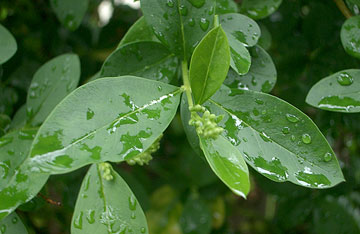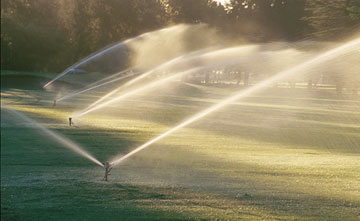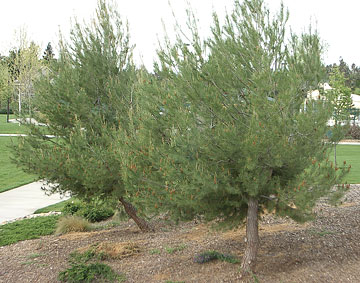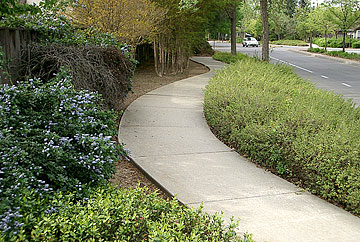Salinity Management Guide

Plants irrigated via sprinklers are more exposed to whatever salinity is in the irrigation water than plants irrigated by applying water directly to the soil.
Other considerations
When using the tables provided here to assess the salt tolerances of species you're considering, keep the following in mind: the method of irrigation used for your landscape can affect the degree to which your plants withstand salt. So, too, can the practices used to manage soils and water.
- Plants absorb salts in water not only through their roots, but also through their leaves. Consequently, irrigation by overhead sprinklers will increase the plants' exposure to the salinity of the water used to irrigate them.
Fortunately, there are a few things you can do to minimize the plants' exposure to saline water spray. One is to group plants in your landscape not only according to similar needs for water, but also according to similar tolerances to salinity. Another is to use sprinkler heads with low-angle nozzles, so that water spray is less likely to hit plants' foliage. Or, switch to a different method of irrigation that applies water only to the soil.

Irrigating in the mornings is one way to offset any adverse effects of using saline water for irrigation.
- You can also attempt to minimize the adverse effects of saline water. One way to do this is to irrigate less often and for longer periods of time, so that salts in the water are less likely to accumulate in the soil near the plants' roots. Another is to irrigate at night or in the early morning, when less evaporation occurs and plants' leaves less readily absorb salts. Yet another is to avoid irrigating on hot, dry, windy days when evaporation is high and plants' leaves more readily absorb salts. Finally, if water of lower salinity is available, irrigate with it either alternately or simultaneously with the water of higher salinity.
The more highly tolerant are the species of plants to the salinity of irrigation water, the less the need for these extra measures.

The permeability of a landscape’s soil makes a difference, for better or worse, in the amount of salt that remains near plants’ roots.
- Soil that's relatively sandy is usually fairly permeable. It more readily allows water to percolate downward, out of the reach of roots. Soil consisting of clay and silt tends to impede the downward percolation of water, increasing the likelihood that salts will accumulate in the soil near the roots of plants. Soils consisting of a relatively permeable top layer and a less permeable lower layer can cause similar problems.
Solutions to the salt-accumulation problem include: regularly aerating the soil; amending the soil; leaching — applying more water than needed for plants, to flush the saline water past the roots (if such a practice is allowed by the local water agency); and periodically monitoring the soil's salinity and adjusting management practices as appropriate.
The more tolerant the species to the unmanaged salinity of the soil, the less the need for such solutions to be implemented.

If irrigation and soil are properly managed, a landscape often will remain largely unaffected by slightly saline water.
What all of this means is that a landscape irrigated with water of somewhat elevated salinity can sustain plants if the proper amount of extra management is implemented. For example, plant species designated as highly tolerant or tolerant in the tables provided in this module require only routine management. Species categorized as moderately tolerant can also be grown; they will require extra management of irrigation and soil. Species deemed sensitive are best not grown at all in such a landscape. Instead, choose plants of higher tolerance.
| « Previous page | Next page » |